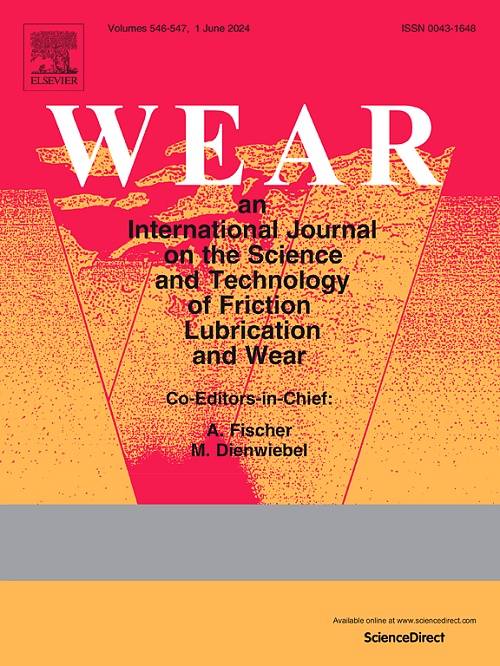The cutting performance of coated and uncoated segmented flute routers with tool wear progression in milling multidirectional CFRP composites
IF 6.1
1区 工程技术
Q1 ENGINEERING, MECHANICAL
引用次数: 0
Abstract
Carbon fiber-reinforced polymer (CFRP) components typically undergo mechanical milling for the dimensional and form accuracy. Tool wear is one of the concerns in milling CFRPs, as the cutting performance and the machinability are significantly affected by the tool wear progression. However, the influence of cutting parameters on tool wear varies across different studies in the literature, with a lack of research on the wear behavior of segmented flute tools considering both tool material and cutting parameters. In this study, both the coated and uncoated segmented flute routers were employed in the milling of CFRPs with various parameters. The cutting performance, including the cutting force, temperature, and machining quality, along with the tool wear progression were analyzed. The results indicate that the effects of cutting speed on tool wear differ among different tools. Although the tool wear both influences and is influenced by the process load, it appears that the impact of tool wear on the process load is more pronounced than the reverse. Tool wear progression shows a strong correlation with the increasing rates of the cutting force, temperature or surface roughness progression, whereas wear behavior cannot be explained simply by the macro magnitudes of the process loads, suggesting the importance of wear mechanisms investigation from a micro-mechanical perspective. By revealing the variation in machinability with tool wear progression, this study may support the optimal selection of cutting tools and parameters for the whole milling process concerning machining efficiency, quality, and tool life.
铣削多向CFRP复合材料时,涂层和未涂层分段槽铣刀的切削性能随刀具磨损的变化
碳纤维增强聚合物(CFRP)部件通常经过机械铣削以达到尺寸和形状精度。刀具磨损是复合材料铣削加工中关注的问题之一,刀具磨损程度对复合材料的切削性能和可加工性有很大影响。然而,切削参数对刀具磨损的影响在不同的文献研究中有所不同,缺乏考虑刀具材料和切削参数的分段槽刀具磨损行为的研究。在本研究中,采用包覆和未包覆的分节槽铣床铣削不同参数的碳纤维复合材料。分析了切削力、切削温度、切削质量等切削性能与刀具磨损的关系。结果表明,不同刀具切削速度对刀具磨损的影响是不同的。虽然刀具磨损既影响工艺负荷,又受工艺负荷的影响,但刀具磨损对工艺负荷的影响似乎比相反的影响更为明显。刀具磨损过程与切削力、温度或表面粗糙度的增加速率密切相关,而磨损行为不能简单地用工艺载荷的宏观量级来解释,这表明从微观力学角度研究磨损机制的重要性。通过揭示刀具磨损过程中可加工性的变化,本研究可以为整个铣削过程中有关加工效率、质量和刀具寿命的刀具和参数的最佳选择提供支持。
本文章由计算机程序翻译,如有差异,请以英文原文为准。
求助全文
约1分钟内获得全文
求助全文
来源期刊

Wear
工程技术-材料科学:综合
CiteScore
8.80
自引率
8.00%
发文量
280
审稿时长
47 days
期刊介绍:
Wear journal is dedicated to the advancement of basic and applied knowledge concerning the nature of wear of materials. Broadly, topics of interest range from development of fundamental understanding of the mechanisms of wear to innovative solutions to practical engineering problems. Authors of experimental studies are expected to comment on the repeatability of the data, and whenever possible, conduct multiple measurements under similar testing conditions. Further, Wear embraces the highest standards of professional ethics, and the detection of matching content, either in written or graphical form, from other publications by the current authors or by others, may result in rejection.
 求助内容:
求助内容: 应助结果提醒方式:
应助结果提醒方式:


